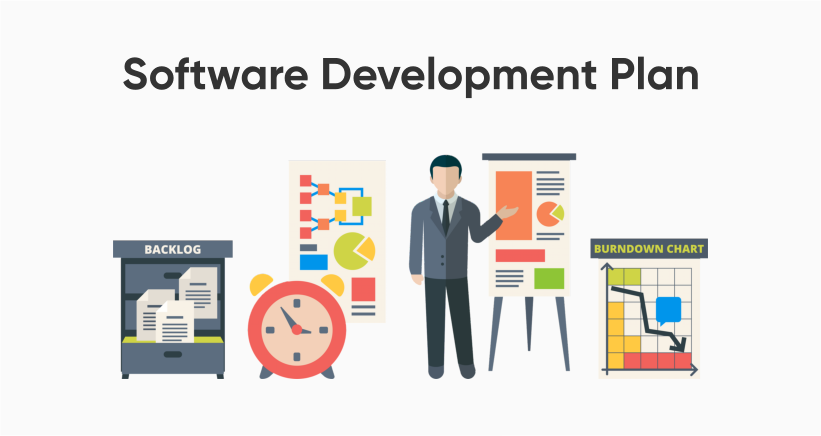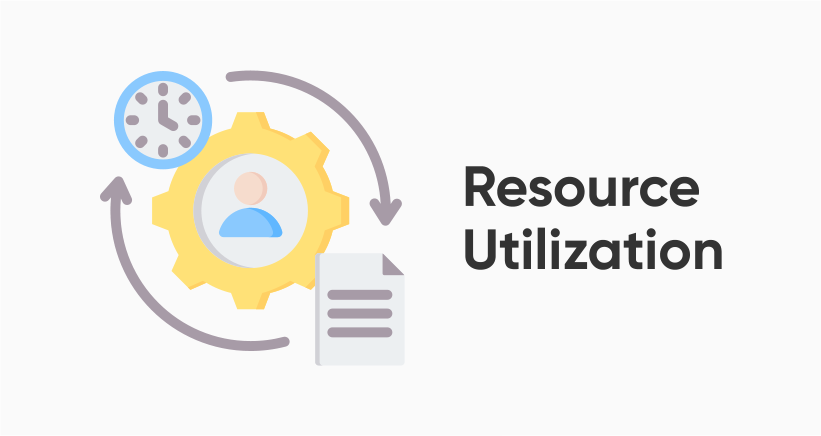What is Software Development Plan?
In the intricate world of software development, planning plays an indispensable role. The compass guides developers and stakeholders, ensuring the project stays on course amidst evolving requirements, unforeseen challenges, and shifting stakeholder expectations.
At the core of this planning process lies the Software Development Plan (SDP). Much like a blueprint in architecture, the SDP provides a comprehensive outline of the project’s goals, timelines, resources, and potential risks. Without such a plan, software projects can quickly deviate from their intended objectives, leading to wasted resources, extended deadlines, and, in some cases, outright project failure.
The Importance of a Software Development Plan
A well-crafted and meticulously executed plan is the bedrock for successful project outcomes in software development. This section delves into the significance of a software development plan by highlighting key aspects that contribute to project success.
Ensuring Project Clarity and Scope
A software development plan provides a roadmap that crystalises the project’s objectives and scope. Without a clear understanding of what needs to be achieved, development teams can easily stray off course, leading to confusion, wasted efforts, and scope creep. A well-defined plan establishes the project’s boundaries, clarifying what features and functionalities are in and out of scope. This clarity fosters a shared vision among team members, stakeholders, and clients, ensuring everyone is aligned and working toward a common goal.
Effective Resource Management
Efficient allocation and management of resources are pivotal to any successful software project. A software development plan enables teams to identify the human, financial, and technical resources required for each development phase. By outlining resource needs and allocations, teams can prevent overallocation or underutilisation, optimising productivity and minimising wastage. This strategic approach also helps allocate the right skill sets to the right tasks, ensuring the project progresses smoothly without bottlenecks.
Risk Identification and Mitigation
The software development landscape is riddled with uncertainties and potential pitfalls. A robust software development plan includes a comprehensive risk assessment identifying potential challenges and bottlenecks that could derail the project. By proactively identifying risks, teams can devise contingency plans and mitigation strategies. This approach minimises the impact of unforeseen issues, ensuring the project stays on track and schedule. Moreover, addressing risks preemptively instils confidence in stakeholders and clients, fostering a sense of trust in the project’s execution.
Timely Project Delivery
In today’s fast-paced business environment, time-to-market is critical to a software project’s success. A well-structured software development plan includes a detailed timeline with milestones and deadlines. These time-bound goals serve as benchmarks for progress and facilitate effective project tracking. By adhering to a well-defined schedule, development teams can ensure the timely delivery of project phases, products, or iterations. Meeting deadlines enhances client satisfaction and establishes a reputation for reliability and professionalism.
Critical Elements of a Comprehensive Software Development Plan
Every successful software project begins with a clear understanding its scope and objectives. This provides a roadmap for all subsequent planning and execution stages.
Project Goals and Objectives
- Purpose of the Project: Start by clearly identifying what problem the software aims to solve or what need it plans to address. This lays the foundation for all other decisions.
- Target Audience: Understanding the software’s end-users helps make design and functionality decisions.
- Key Features and Deliverables: List out the main features the software must have and the deliverables expected at the end of the project.
- Success Criteria: Establish what constitutes a successful completion of the project. This could be based on user satisfaction, achievement of specific performance metrics, or other benchmarks.
Outlining the Scope of Work
- In-Scope: Clearly describe what’s included in the project. This could involve specific modules, integrations, or functionalities.
- Out-of-Scope: Equally important is identifying what won’t be tackled in this project to set clear boundaries and manage stakeholder expectations.
- Assumptions and Dependencies: Identify any assumptions being made at the start of the project and any dependencies that might influence the project’s flow.
- Constraints: Document any limitations, be it technology, budget, time, or resources, that must be considered during the project’s lifecycle.
- Revision Mechanism: Define how changes to the scope will be handled. This includes requesting changes, analysing their impact, and deciding upon implementation.
Resource Allocation and Management
Effectively managing and allocating resources is a linchpin in the success of any software development project. This section delves into the critical role of resource allocation and management within a comprehensive software development plan.
Allocating human resources effectively
Human resources are the lifeblood of any software development project. Skilled and motivated team members are the driving force behind turning ideas into tangible solutions. The software development plan outlines the strategic allocation of human resources, ensuring people are assigned the right tasks based on their expertise, experience, and strengths.
The software development plan enhances team productivity and synergy by matching skills to tasks. It fosters a collaborative environment where each team member contributes effectively, leading to streamlined development and quicker problem-solving. Effective resource allocation also minimises the risk of overloading certain team members while underutilising others, ensuring a balanced and efficient workflow.
Managing time and budget constraints
Time and budget are finite resources that demand meticulous management. The software development plan is a time-bound roadmap, breaking the project’s timeline into manageable phases and milestones. Each stage is allocated a specific timeframe, enabling the development team to monitor progress and adjust as needed. Additionally, a well-structured timeline ensures the project stays on track and meets its predetermined deadlines.
Budget management is equally critical. The software development plan sets a detailed budget, accounting for various expenses such as personnel, tools, equipment, and potential contingencies. By adhering to a well-defined budget, the project maintains financial stability, avoids overspending, and minimises the risk of unforeseen economic challenges.
Risk Assessment and Management
Navigating the complex landscape of software development involves anticipating and addressing potential challenges. This section explores the pivotal role of risk assessment and management within a comprehensive software development plan.
Identifying Potential Risks and Challenges
In the ever-evolving world of software development, uncertainty is a constant. The software development plan takes a proactive stance by conducting a comprehensive risk assessment. This involves identifying potential risks, challenges, and vulnerabilities that could impede the project’s progress or compromise its success.
These risks can span from technical complexities and resource constraints to external factors such as market shifts or regulatory changes. By diligently identifying these risks, the software development plan equips the team with a holistic understanding of potential roadblocks, allowing for early intervention and mitigation strategies.
Developing Strategies for Risk Mitigation
Risk assessment without effective mitigation strategies is incomplete. The software development plan outlines a systematic approach to address identified risks. It involves the creation of targeted mitigation plans, each tailored to address specific risks and their potential impact.
Mitigation strategies may encompass diverse approaches, including alternative development paths, contingency plans, or even preemptive adjustments to the project scope. The software development plan ensures that these strategies are developed and integrated seamlessly into the project’s timeline and objectives.
Timelines and Milestones
Effective project management in software development hinges on establishing clear timelines and achievable milestones. This section delves into the critical role that timelines and milestones play within a comprehensive software development plan.
Creating a Project Timeline
A project timeline serves as the backbone of software development planning. It visually represents the project’s phases, tasks, and their respective durations. The software development plan meticulously outlines the timeline for each development phase, ensuring that the project progresses in a logical sequence.
The timeline accounts for dependencies between tasks, allowing efficient resource allocation and avoiding bottlenecks. It also includes buffer time to accommodate unforeseen delays and fluctuations in workload. The software development plan ensures the timeline is realistic, considering the complexity of tasks, available resources, and potential challenges.
A well-structured timeline aids in project tracking, allowing the development team and stakeholders to monitor progress, identify deviations, and make timely adjustments. It also enables effective communication, as stakeholders can understand the project’s status and expected milestones.
Setting Achievable Milestones
Milestones are critical markers that signify the completion of significant project phases or deliverables. The software development plan defines clear and achievable milestones that align with the project’s objectives. Each milestone represents a tangible achievement that contributes to the overall project progress.
Setting achievable milestones involves breaking down the project’s larger objectives into smaller, manageable components. These milestones act as checkpoints, ensuring the project is on track and meeting its intended targets. The software development plan also allocates specific timeframes for each milestone, enabling the development team to gauge their progress and make necessary adjustments.
The software development plan’s emphasis on achievable milestones fosters a sense of accomplishment within the team and provides stakeholders with visible evidence of project advancement. Celebrating these milestones boosts team morale and enhances transparency, as stakeholders can tangibly witness the project’s evolution.
Communication Plan
Effective communication lies at the heart of successful software development. This section delves into the significance of establishing a communication plan and ensuring seamless collaboration among team members within a comprehensive software development plan.
Establishing Clear Communication Channels
Clear and consistent communication is paramount in the intricate web of software development. The software development plan outlines a comprehensive communication strategy, defining the channels, frequency, and modes of communication among team members, stakeholders, and clients.
By establishing clear communication channels, the plan fosters transparency and minimises misunderstandings. It ensures that critical information, updates, and decisions are shared promptly and comprehensively. The software development plan ensures that all parties are informed and aligned, whether through regular team meetings, status reports, or dedicated communication tools.
Clear communication channels empower team members to voice concerns, seek clarification, and offer valuable insights. This open dialogue promotes a culture of collaboration, creativity, and knowledge-sharing, enriching the development process.
Ensuring Collaboration Among Team Members
Software development is a collaborative endeavour that thrives on collective expertise. The software development plan champions collaboration by fostering an environment where team members contribute their unique skills and perspectives.
The plan outlines collaborative tools and platforms facilitating real-time information sharing, document collaboration, and version control. It promotes cross-functional collaboration by encouraging interactions between developers, designers, testers, and other stakeholders throughout the project lifecycle.
The software development plan also embraces agile methodologies that emphasise continuous collaboration, iterative development, and adaptive responses to change. Regular stand-up meetings, sprint reviews, and retrospectives are integrated into the plan to ensure the team remains engaged, aligned, and responsive to evolving project needs.
Quality Assurance and Testing
Ensuring the reliability and functionality of a software product is paramount in software development. This section explores the vital role of quality assurance (QA) and testing within a comprehensive software development plan.
Implementing QA Processes
Quality assurance is a systematic approach to ensure the software product meets predefined quality standards. The software development plan outlines a series of QA processes to identify defects, deviations, and inconsistencies in the development process.
These processes include code reviews, static analysis, and continuous integration. The plan mandates strict adherence to coding guidelines, documentation standards, and best practices. By instilling a culture of quality at every development stage, QA processes enhance code readability, maintainability, and overall software integrity.
Incorporating Testing and Debugging Phases
Thorough testing is the cornerstone of reliable software. The software development plan integrates comprehensive testing phases to validate the software’s functionality, performance, and security.
Testing encompasses unit testing, integration testing, system testing, and user acceptance testing. Each testing phase is meticulously planned, executed, and documented. The plan emphasises automated testing to streamline repetitive tests and ensure consistent results.
Inevitably, bugs and defects may surface during testing. The software development plan allocates dedicated debugging phases to identify, isolate, and rectify these issues. Debugging involves rigorous problem-solving, code analysis, and collaboration among team members.
The software development plan enhances the software’s robustness, stability, and user satisfaction by incorporating testing and debugging phases. It ensures that the software performs as intended and meets or exceeds user expectations.
Benefits of a Well-Executed Software Development Plan
Efficient Project Execution
Efficiency in project execution is a cornerstone of successful software development. This section delves into the significance of achieving efficient project execution, including a streamlined development process and minimised scope creep, within a comprehensive software development plan.
Streamlined Development Process
A streamlined development process is the backbone of efficient project execution. The software development plan outlines a well-defined and optimised workflow that guides the project from conception to completion.
This process involves breaking down the development lifecycle into distinct phases, each with specific goals, tasks, and deliverables. The plan emphasises seamless transitions between stages, efficient resource allocation, and cross-functional collaboration. By creating a structured and well-coordinated development process, the plan minimises redundancies, reduces inefficiencies, and accelerates development.
Furthermore, the software development plan may incorporate agile methodologies such as Scrum or Kanban. These methodologies prioritise iterative development, continuous feedback, and adaptive responses to change. Agile practices foster a flexible, responsive, and collaborative environment, allowing teams to deliver value incrementally while maintaining high levels of efficiency.
Minimised Scope Creep
Scope creep, the gradual expansion of project requirements beyond the original scope, is a common challenge in software development. The software development plan takes a proactive approach to minimise scope creep by defining and adhering to a well-defined project scope.
The plan establishes a thorough requirement gathering, analysis, and documentation process. It emphasises regular communication and feedback loops with stakeholders to ensure project requirements align with the original objectives. Additionally, the plan integrates a change control mechanism that carefully evaluates and approves any proposed changes to the project scope.
By mitigating scope creep, the software development plan prevents delays, budget overruns, and the dilution of project focus. It enables the development team to maintain a clear trajectory, prioritise essential features, and deliver a software product that meets stakeholders’ needs and expectations.
Enhanced Resource Utilisation
Optimising resource allocation and enhancing productivity are essential for the success of any software development project. This section explores the importance of improving resource utilisation within a comprehensive software development plan.
Optimal Allocation of Resources
Resource allocation is a strategic endeavour that involves assigning the right people, tools, and materials to specific tasks and activities. The software development plan emphasises optimal resource allocation to leverage each team member’s skills and expertise effectively.
The plan maximises efficiency and minimises wastage by aligning individual strengths with project requirements. It prevents overloading team members while ensuring that no skills go underutilised. This balance enhances team morale, fosters collaboration, and creates a dynamic environment where every contributor’s potential is fully realised.
The plan also considers allocating non-human resources, such as software tools, equipment, and infrastructure. Proper allocation of technical resources supports seamless development, testing, and deployment, leading to enhanced overall productivity.
Conclusion
A well-structured software development plan is undeniably the foundation for successful projects. Its meticulously designed components create a roadmap that navigates the complexities of development, ensuring a clear path from concept to fruition. From delineating objectives to orchestrating resource allocation, mitigating risks, and cultivating open communication channels, the power of a thoughtfully crafted plan cannot be overstated.
At this juncture, consider taking the next decisive step to elevate your business to new heights—partner with Ubique Digital Solutions, a trusted ally in software development and strategic planning. Together, we’ll harness the power of technology, refine your development strategies, and propel your business toward unparalleled success. Contact us today.
FAQs
Q: Why Do Software Development Projects Need a Plan?
Like all complex endeavours, software development projects require careful planning to execute successfully. A plan serves as a blueprint and provides numerous benefits.
Q: How Does a Software Development Plan Contribute to Project Success?
A software development plan contributes to project success by providing a structured roadmap for the entire project lifecycle. It ensures clear communication among team members and stakeholders, defines project scope and objectives, allocates resources effectively, manages risks, facilitates timely execution, maintains quality standards, and enables efficient problem-solving. A well-crafted plan enhances the chances of delivering a high-quality product on time and within budget.
Q: Can a Software Development Plan Be Adapted during the Project Lifecycle?
Yes, a software development plan can be adapted during the project lifecycle. Changes in requirements, unforeseen challenges, new opportunities, or shifting priorities may necessitate adjustments to the plan. Change management processes should be in place to evaluate proposed changes, assess their impact, and implement them if they align with project goals. However, any changes should be carefully managed to prevent disruptions and ensure the project’s objectives are still met.
Q: What Role Does Communication Play in a Software Development Plan?
Communication is pivotal in a software development plan. It facilitates collaboration among team members, stakeholders, and clients. A communication plan outlines how information will be shared, meetings will be conducted, and progress will be reported. Effective communication ensures everyone is aligned with project goals, aware of updates or changes, and informed about milestones or challenges. Clear communication prevents misunderstandings, keeps expectations realistic, and fosters a collaborative and productive work environment.
Q: How Is Risk Management Addressed in a Software Development Plan?
Risk management is addressed in a software development plan through a dedicated risk management plan. This plan identifies potential risks that could impact the project’s success and outlines strategies to mitigate, avoid, or manage these risks. It includes processes for risk assessment, risk prioritisation, and the development of contingency plans. By proactively identifying and addressing risks, a software development plan helps the project team navigate challenges more effectively and increases the likelihood of successful project outcomes.

























